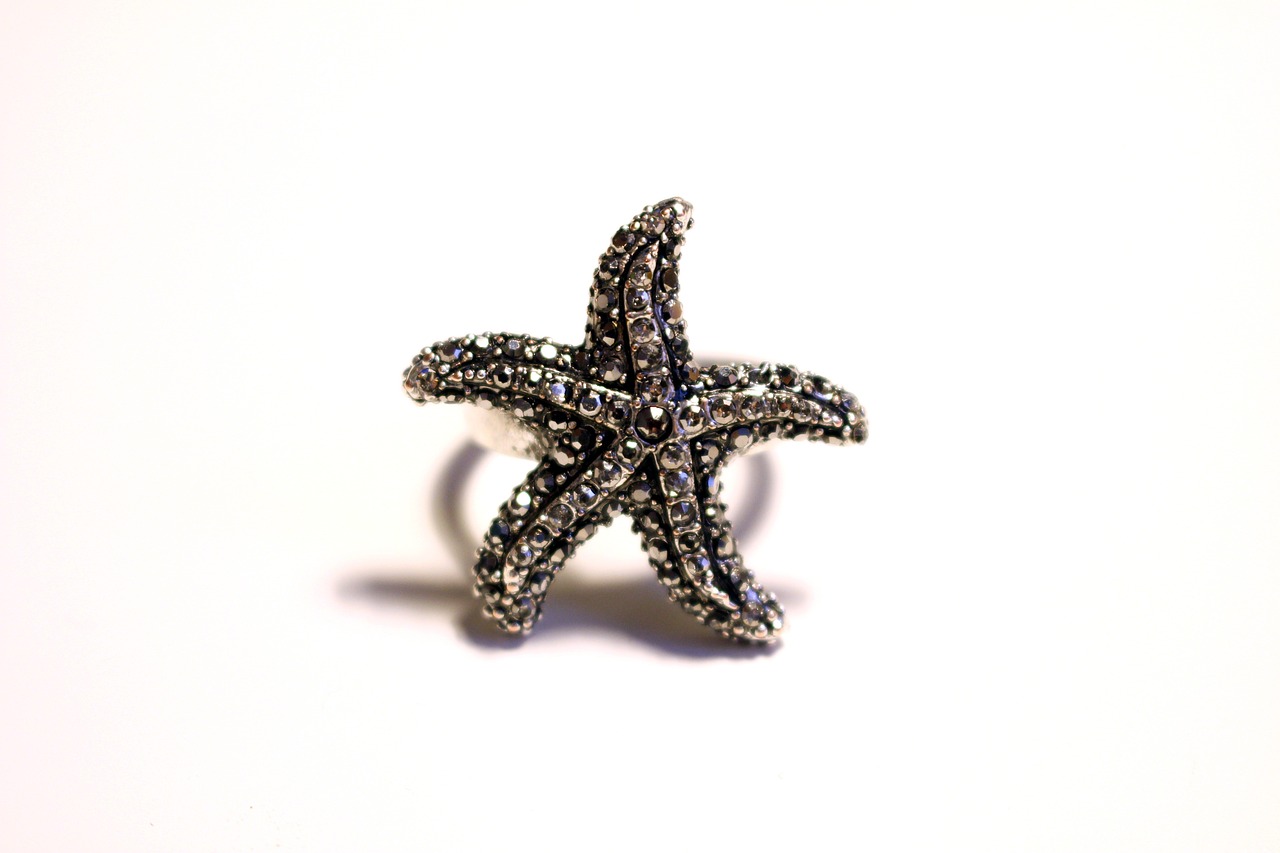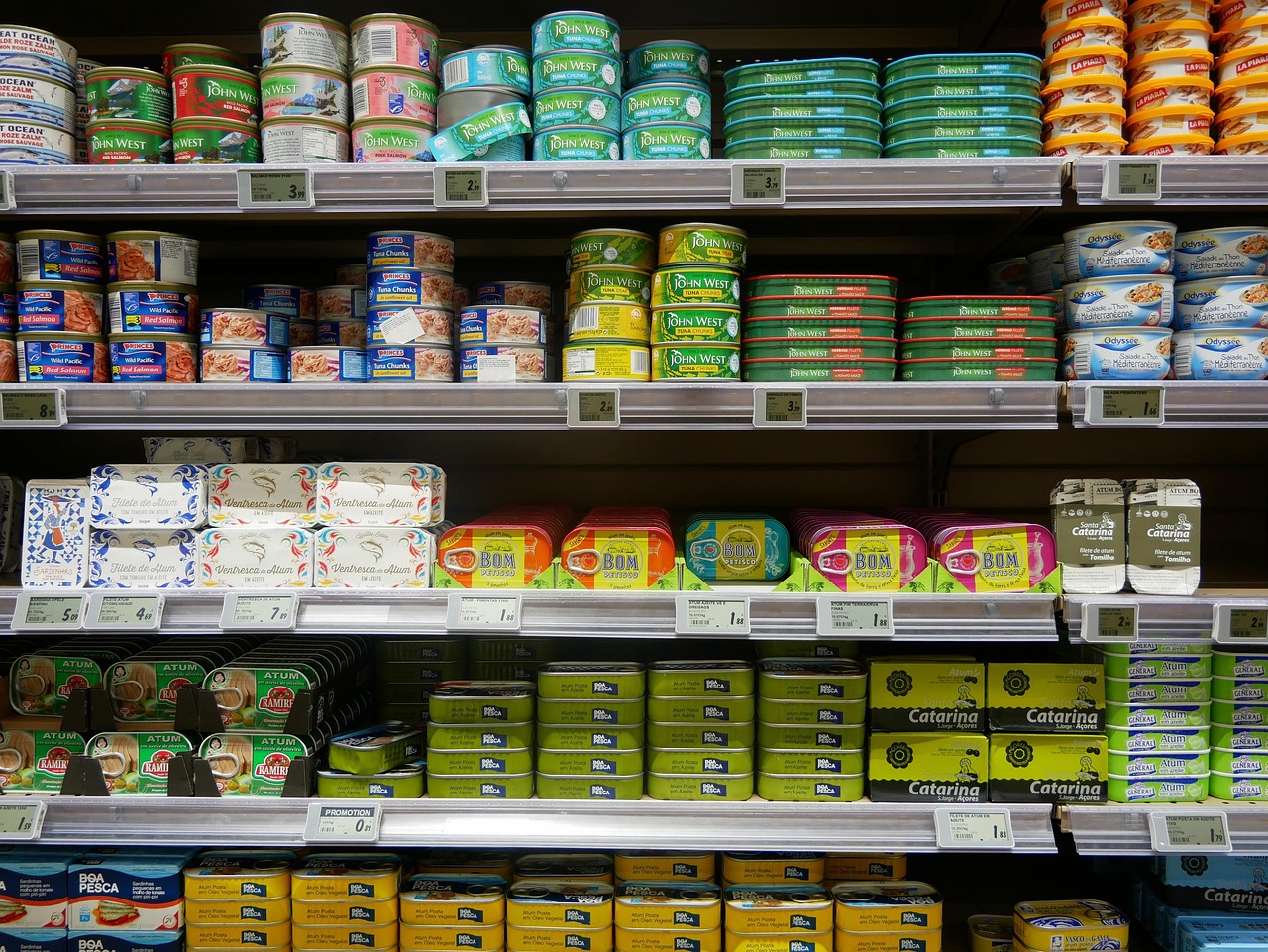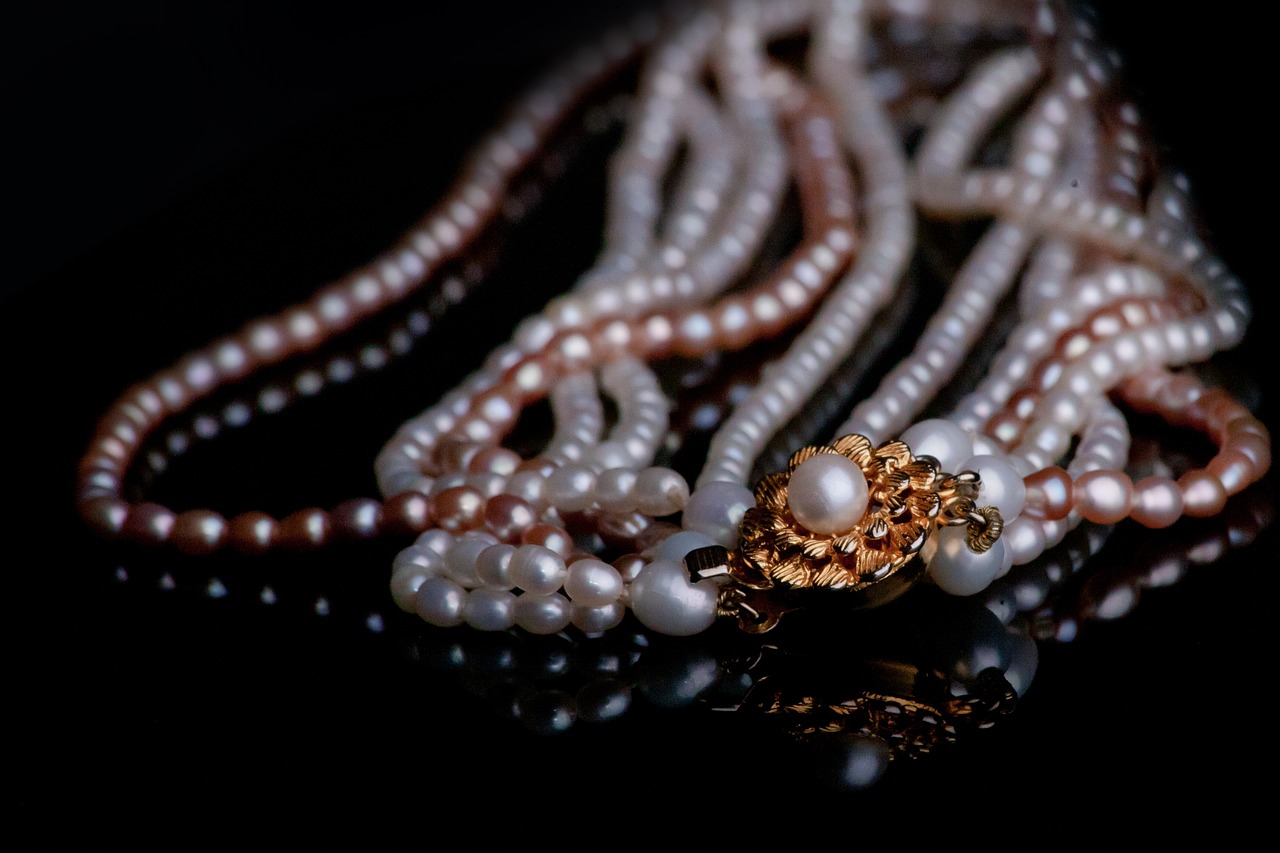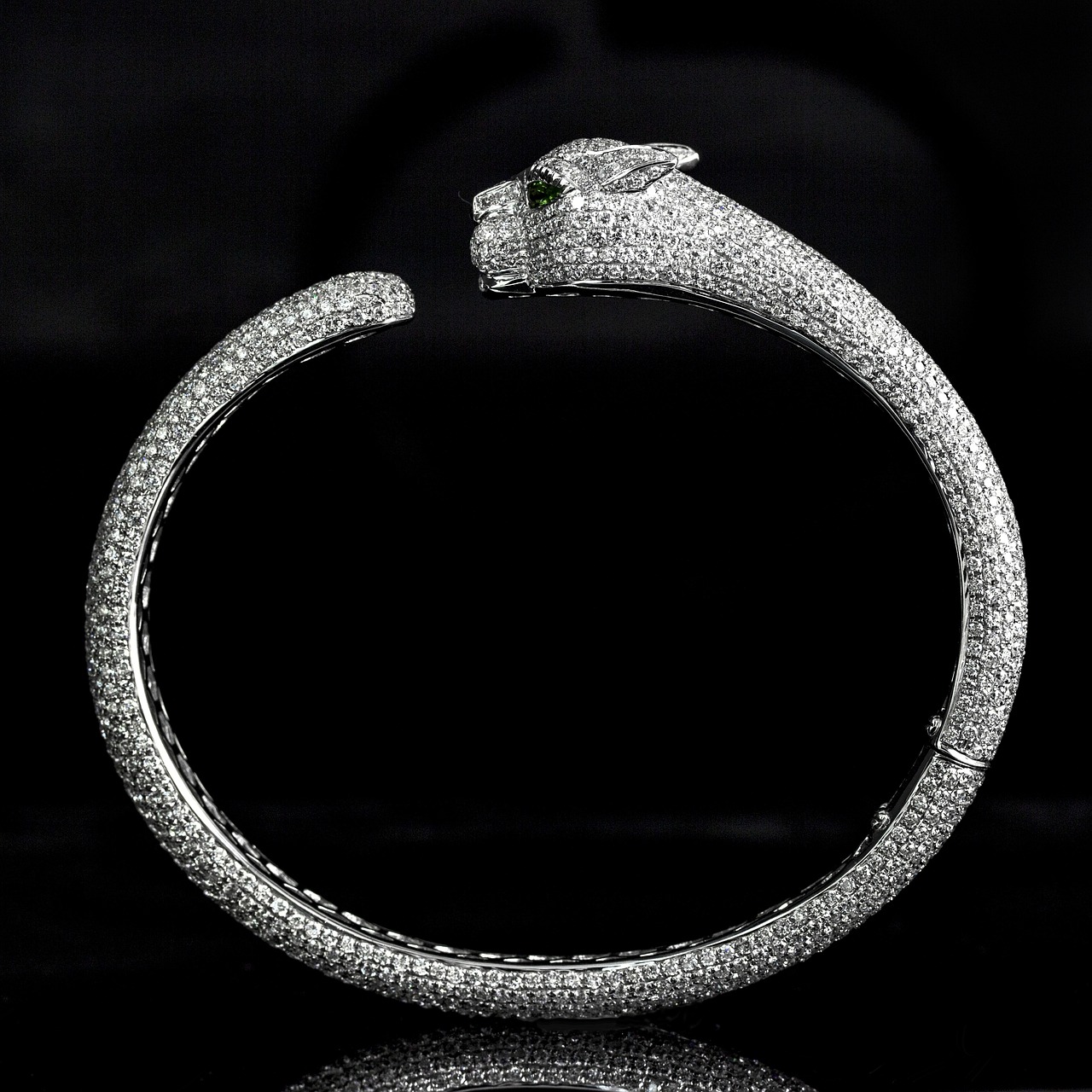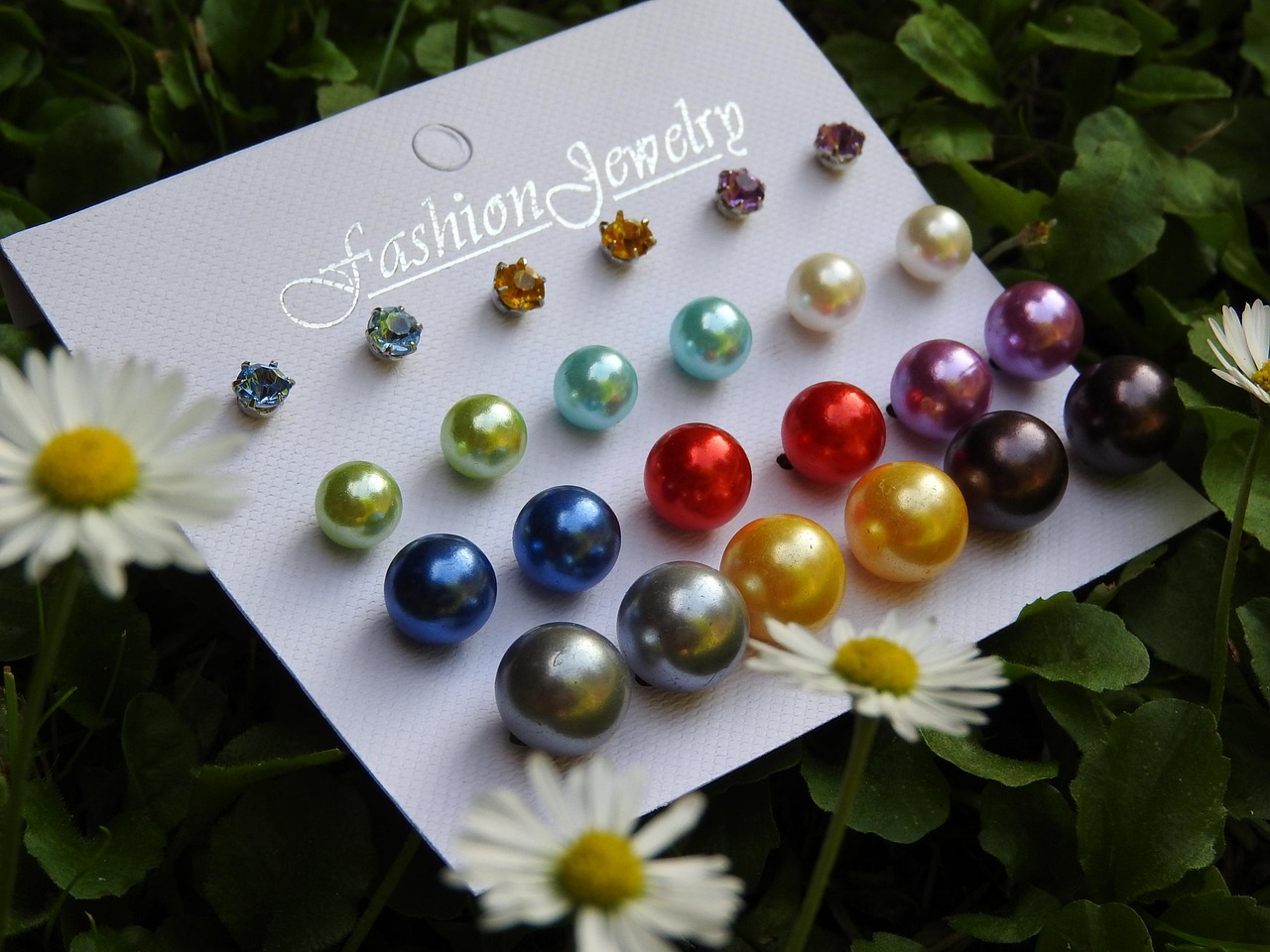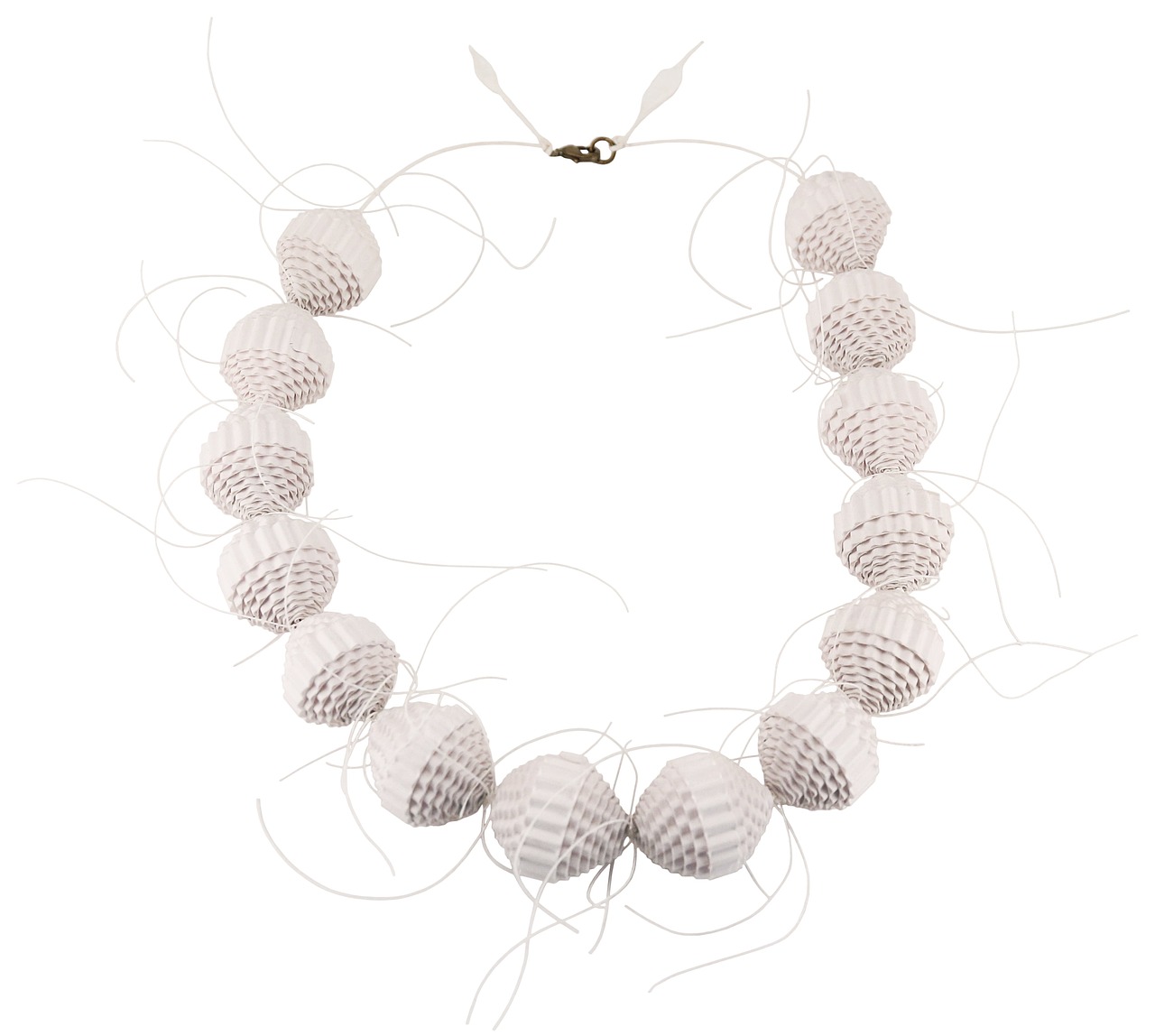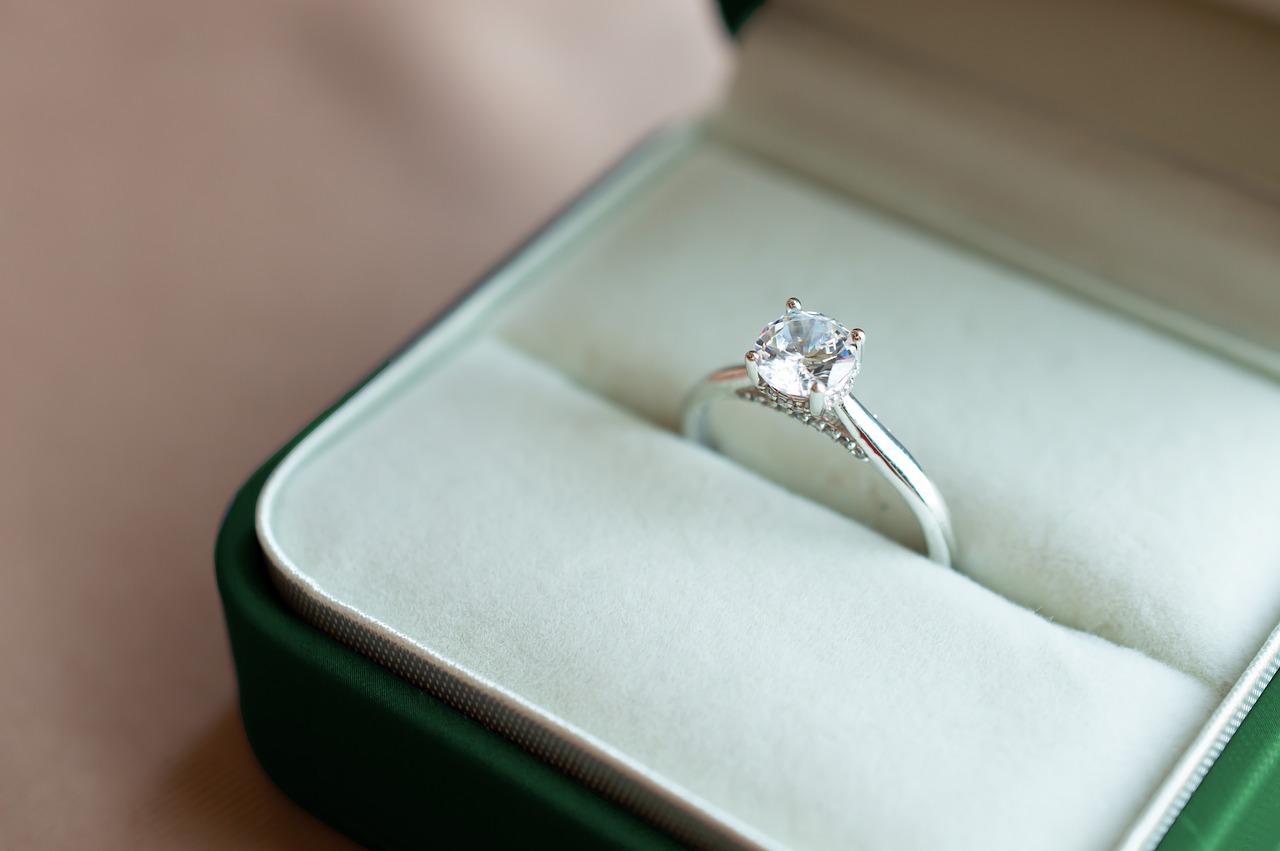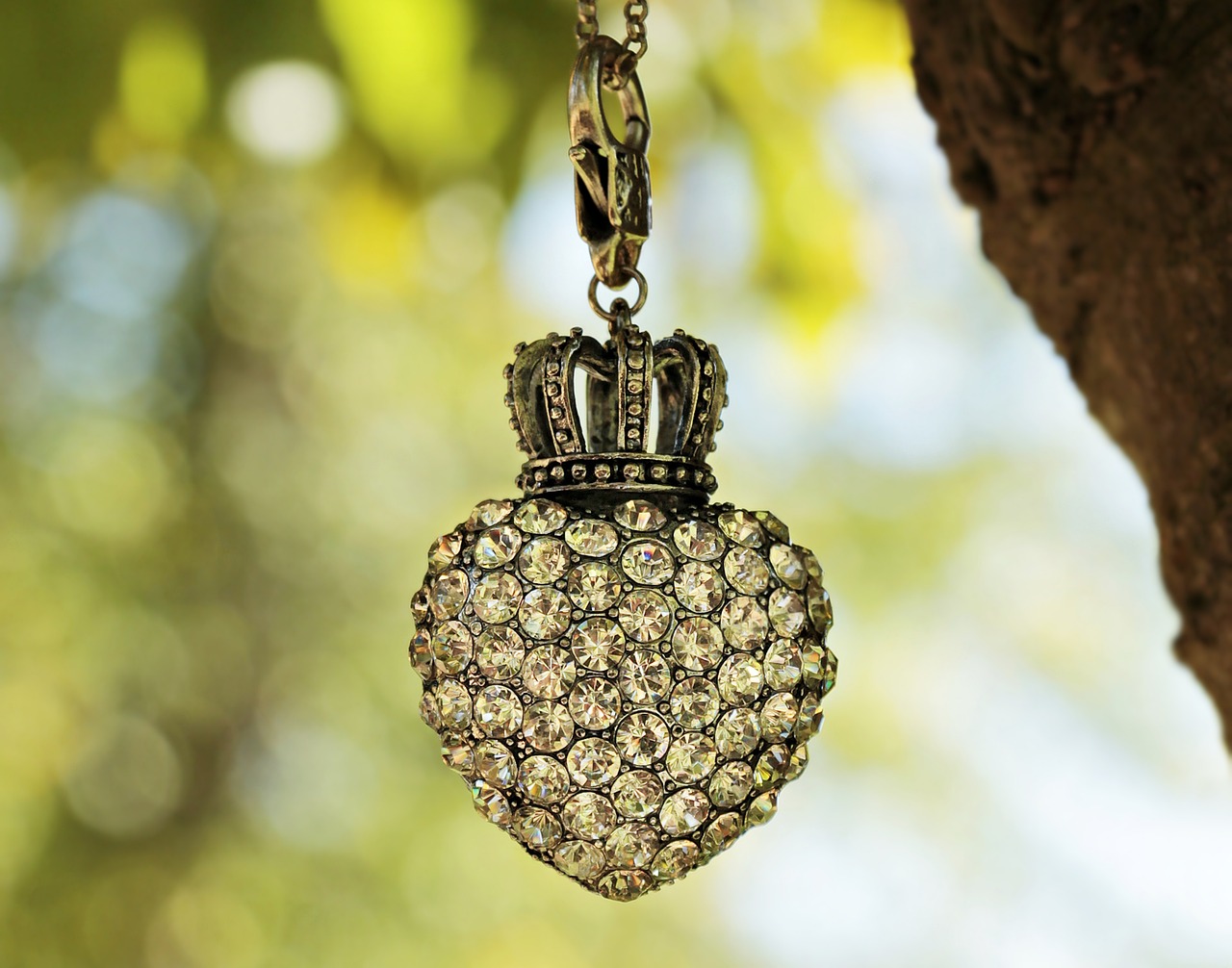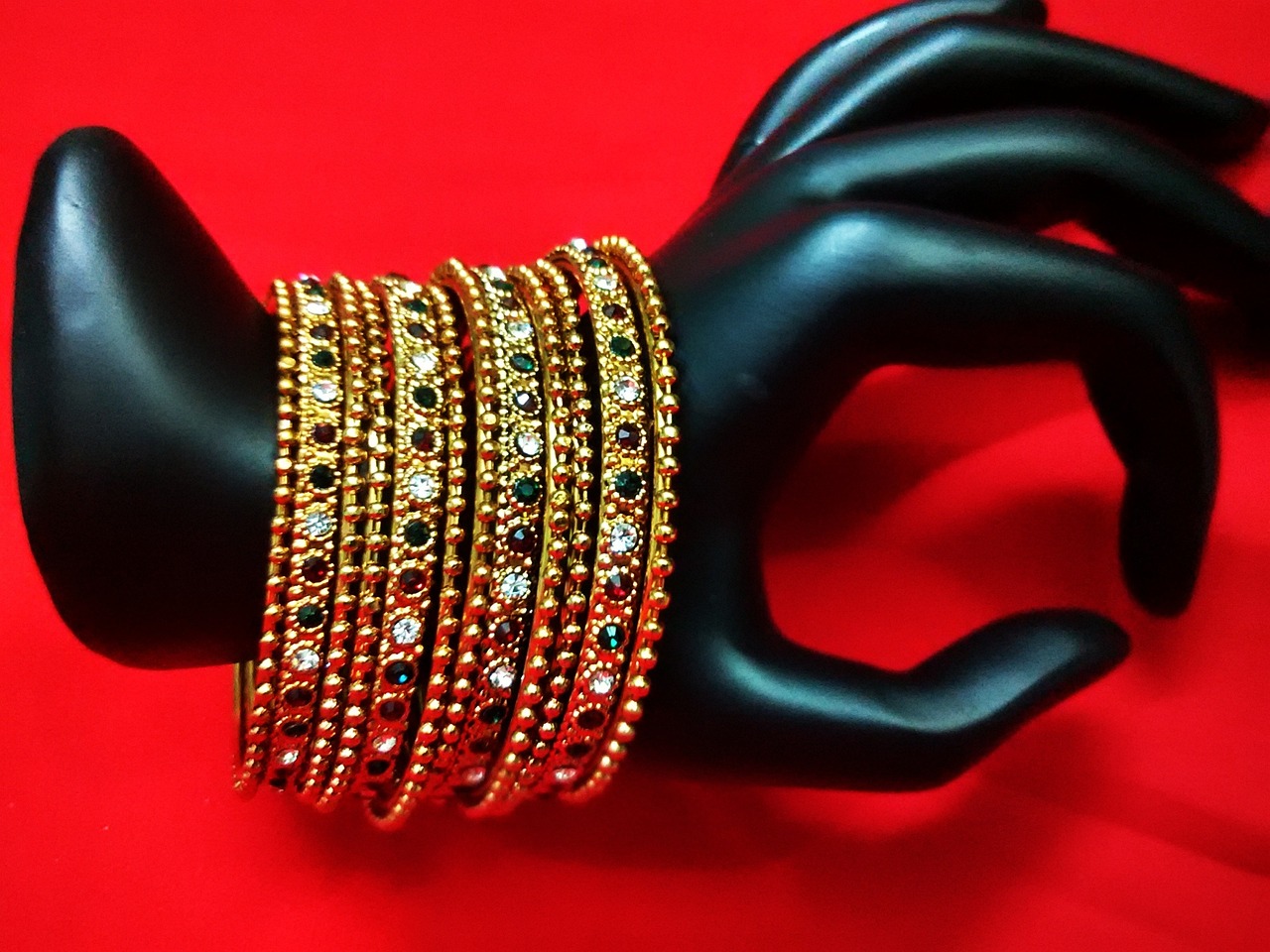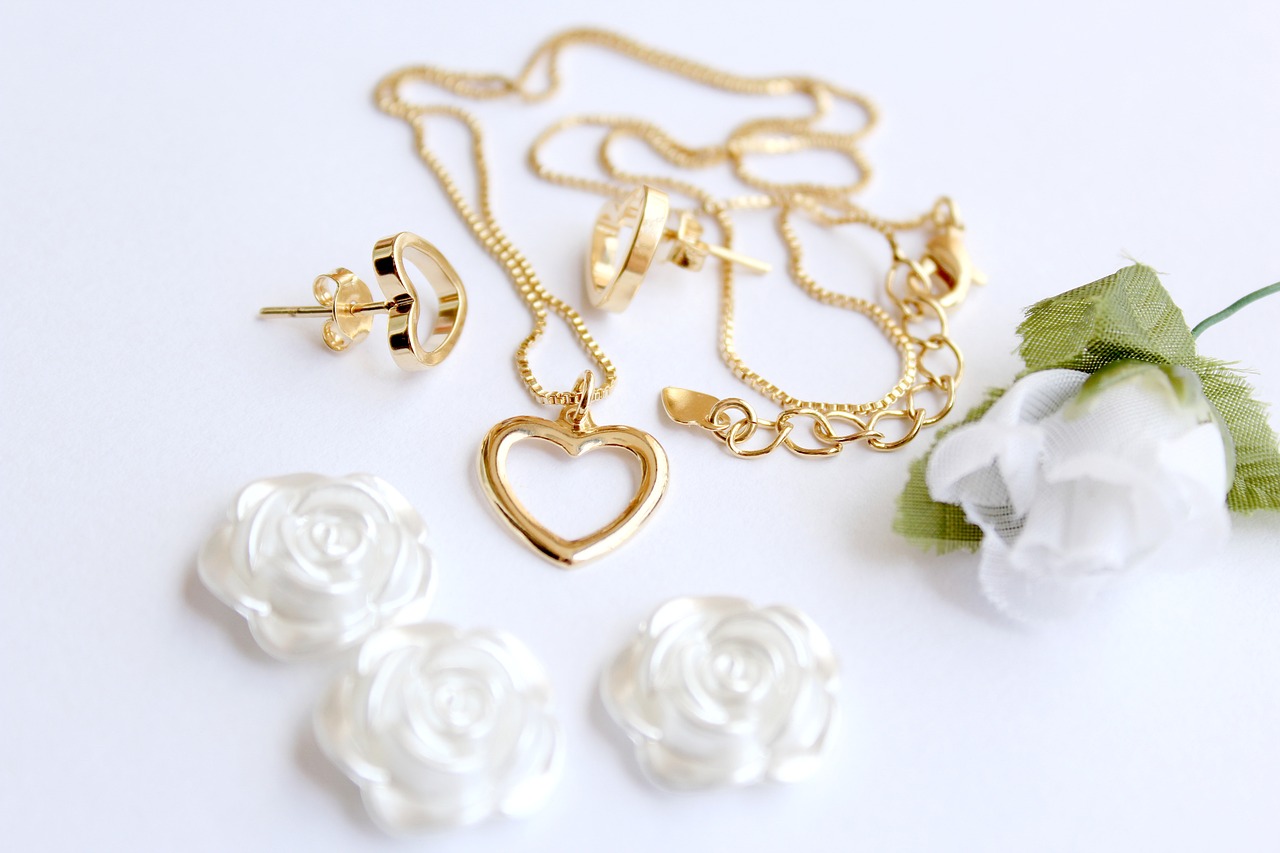Lab-grown diamonds and custom rings are revolutionizing the engagement jewelry market. As couples increasingly seek alternatives to traditional mined diamonds, these innovative options are gaining popularity for their ethical, environmental, and economic advantages. This article delves into the rise of lab-grown diamonds and custom rings, examining their benefits and the impact they have on the jewelry industry.
Lab-grown diamonds, also known as synthetic or cultured diamonds, are created in controlled environments using advanced technology. They possess the same physical, chemical, and optical properties as natural diamonds, making them virtually indistinguishable to the naked eye. This quality appeals to consumers looking for genuine beauty without the ethical concerns associated with mined diamonds.
Lab-grown diamonds are produced through two primary methods: High Pressure High Temperature (HPHT) and Chemical Vapor Deposition (CVD). Understanding these processes helps consumers appreciate the technology behind these gems.
- High Pressure High Temperature (HPHT): This method mimics the natural conditions under which diamonds form in the earth. It involves extreme pressure and temperature, resulting in diamonds that are nearly identical to mined ones.
- Chemical Vapor Deposition (CVD): In this process, gases are used to deposit carbon atoms onto a substrate, gradually building a diamond crystal layer by layer.
Choosing lab-grown diamonds for engagement rings offers several compelling benefits:
- Ethical Considerations: Lab-grown diamonds eliminate concerns related to conflict diamonds, ensuring that your purchase supports ethical practices.
- Cost-Effectiveness: Lab-grown diamonds can be significantly less expensive than their mined counterparts, allowing couples to invest in custom designs or additional features.
- Environmental Sustainability: The production of lab-grown diamonds generally requires less land disruption and has a lower carbon footprint compared to mined diamonds.
Custom rings allow couples to express their unique love stories through personalized designs. Lab-grown diamonds serve as a stunning centerpiece for these bespoke creations.
Custom engagement rings provide couples with the freedom to design a piece that reflects their individuality. From selecting the diamond shape to choosing the band style, the options are limitless. Popular styles include:
- Vintage-inspired settings
- Modern minimalist designs
- Intricate halo settings
Lab-grown diamonds are often touted as a more sustainable choice compared to mined diamonds. Their production generally requires less land disruption and has a lower carbon footprint.
- Land Use and Ecosystem Preservation: Mined diamonds require extensive land excavation, which can lead to habitat destruction. In contrast, lab-grown diamonds are produced in controlled environments, helping to preserve natural ecosystems.
- Carbon Footprint Comparison: The carbon emissions associated with lab-grown diamonds are significantly lower than those from diamond mining, appealing to eco-conscious consumers.
The growing popularity of lab-grown diamonds suggests they are shaping the future of engagement jewelry. Their affordability, ethical sourcing, and environmental benefits resonate with modern consumers. Market trends indicate a shift in consumer preferences towards these gems, as awareness continues to increase.
Industry experts believe that lab-grown diamonds will continue to gain traction, influencing the engagement jewelry landscape. With ongoing innovations in production technology and design, the future looks bright for lab-grown diamonds and custom rings, making them a compelling choice for couples seeking meaningful and responsible jewelry.
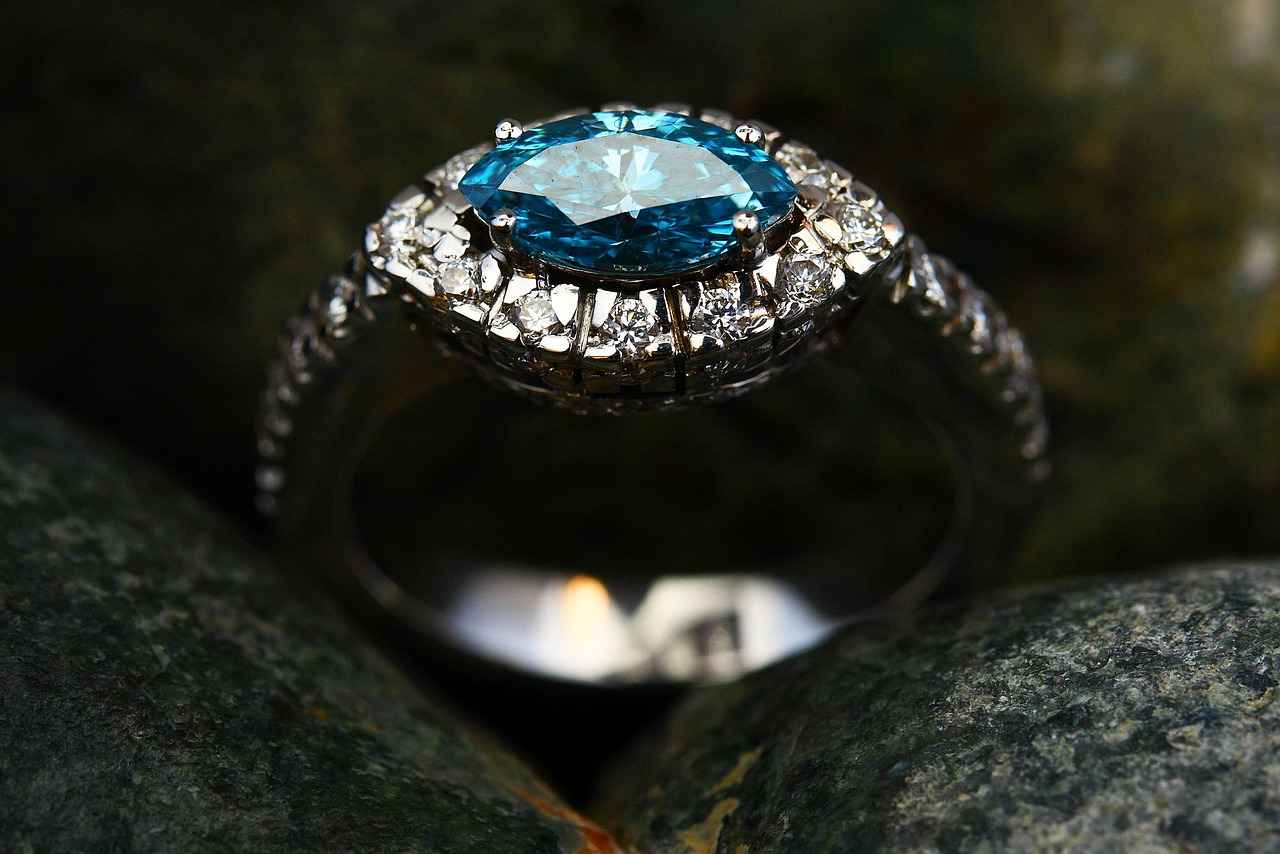
What Are Lab-Grown Diamonds?
Lab-grown diamonds are revolutionizing the jewelry industry, providing an ethical and sustainable alternative to traditional mined diamonds. These exquisite stones are not only visually stunning but also possess the same physical and chemical properties as their natural counterparts. Understanding what lab-grown diamonds are and how they are created can help consumers make informed choices when selecting engagement rings or other fine jewelry.
Lab-grown diamonds are synthetic gemstones produced in controlled environments using advanced technology that mimics the natural diamond formation process. Unlike mined diamonds, which are extracted from the earth, lab-grown diamonds are created through two primary methods: High Pressure High Temperature (HPHT) and Chemical Vapor Deposition (CVD).
- High Pressure High Temperature (HPHT): This method replicates the extreme conditions found deep within the Earth, where natural diamonds form. By applying intense pressure and heat, carbon atoms are transformed into diamonds.
- Chemical Vapor Deposition (CVD): In this innovative process, gases are used to deposit carbon atoms onto a substrate, gradually building a diamond layer by layer. This method allows for greater control over the diamond’s characteristics.
Choosing lab-grown diamonds for engagement rings comes with numerous benefits:
- Ethical Sourcing: Lab-grown diamonds eliminate the risk of conflict diamonds, ensuring that your purchase supports ethical practices.
- Cost-Effectiveness: Generally, lab-grown diamonds are priced significantly lower than mined diamonds, enabling couples to allocate their budget towards custom designs or additional features.
- Environmental Sustainability: The production of lab-grown diamonds typically has a lower environmental impact, requiring less land disruption and generating fewer carbon emissions.
Lab-grown diamonds serve as a stunning centerpiece for custom engagement rings. These bespoke creations allow couples to express their unique love stories through personalized designs.
- Benefits of Custom Engagement Rings: Custom rings offer the freedom to design a piece that reflects individuality, from selecting the diamond shape to choosing the band style.
- Popular Custom Ring Styles: From vintage-inspired settings to modern minimalist designs, couples can find the perfect match for their lab-grown diamond.
Lab-grown diamonds are often considered a more sustainable option compared to mined diamonds. Their production generally requires less land disruption and has a significantly lower carbon footprint.
- Land Use and Ecosystem Preservation: Mined diamonds necessitate extensive land excavation, which can lead to habitat destruction. Conversely, lab-grown diamonds are produced in controlled environments, preserving natural ecosystems.
- Carbon Footprint Comparison: The carbon emissions associated with lab-grown diamonds are considerably lower than those from diamond mining, making them an appealing choice for eco-conscious consumers.
The growing popularity of lab-grown diamonds suggests they are significantly influencing the future of engagement jewelry. Their affordability, ethical sourcing, and environmental benefits resonate with modern consumers, leading to a shift in market trends.
As awareness of lab-grown diamonds increases, many jewelers are adapting to these changing preferences, ensuring that they meet the demands of a new generation of buyers. With expert insights indicating a continued rise in the popularity of lab-grown diamonds, it is clear that these gems are not just a passing trend but a lasting innovation in the jewelry industry.
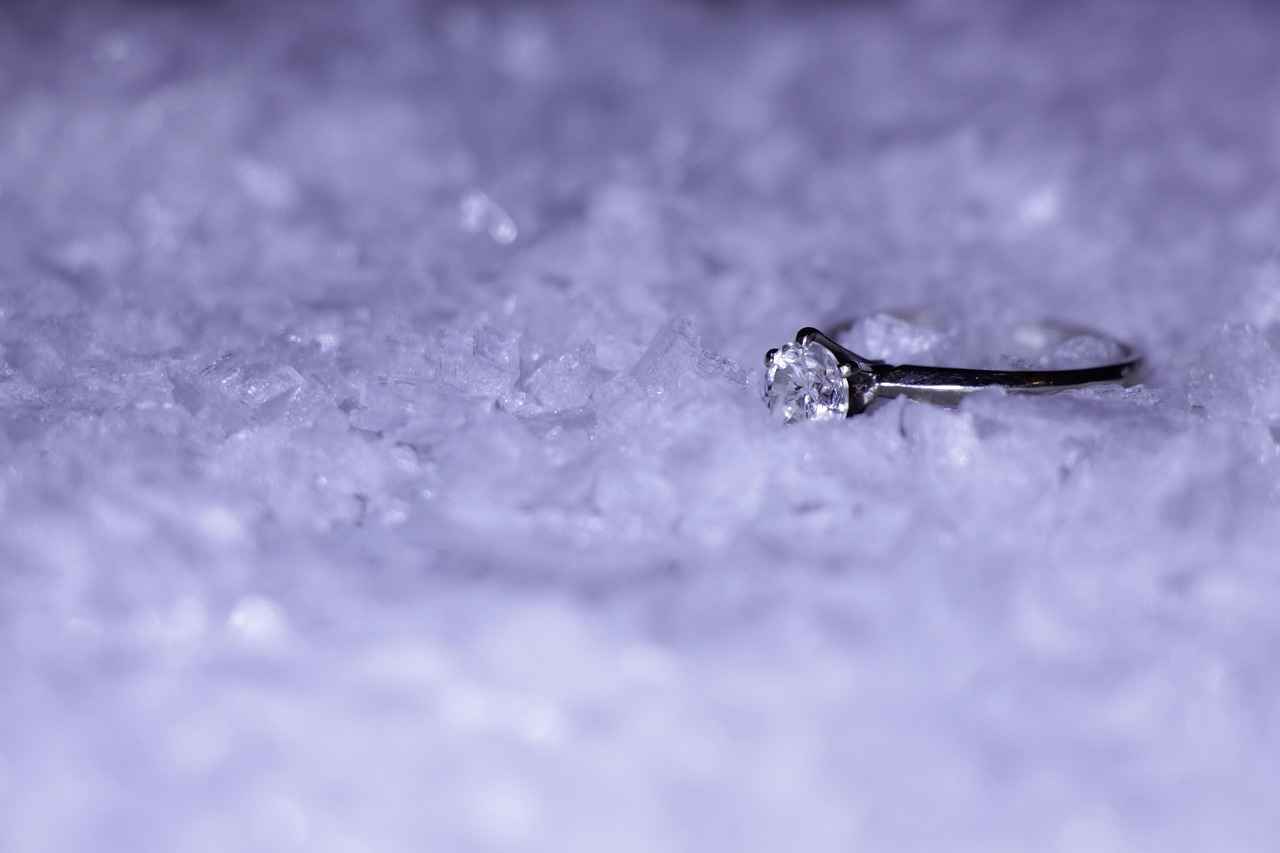
How Are Lab-Grown Diamonds Made?
Lab-grown diamonds have revolutionized the jewelry industry, offering consumers a sustainable and ethical alternative to mined diamonds. Understanding how these stunning gems are created is crucial for anyone considering them for engagement rings or other fine jewelry. This article delves into the two primary methods of lab-grown diamond production: High Pressure High Temperature (HPHT) and Chemical Vapor Deposition (CVD).
Lab-grown diamonds are produced through advanced technological processes that replicate the natural conditions under which diamonds form in the Earth. These methods ensure that lab-grown diamonds possess the same physical, chemical, and optical properties as their mined counterparts, making them an appealing choice for consumers. Let’s explore these methods in detail.
The HPHT method simulates the intense heat and pressure found deep within the Earth, where natural diamonds are formed. In this process, a small diamond seed is placed in a chamber, along with carbon and a metal catalyst. The chamber is then subjected to extreme conditions, reaching temperatures of over 1,500 degrees Celsius and pressures of around 1.5 million pounds per square inch. This environment allows the carbon to crystallize around the seed, forming a diamond.
- Speed of Production: HPHT diamonds can be created in just a few weeks, making them a more accessible option for consumers.
- Color Variety: This method allows for the production of diamonds in various colors, appealing to a wide range of tastes.
While HPHT diamonds have many advantages, there are some considerations to keep in mind:
- Inclusions: Some HPHT diamonds may contain inclusions that can affect their clarity.
- Cost: Although generally less expensive than mined diamonds, HPHT diamonds can still be costly depending on their quality and size.
The CVD method is another innovative technique for creating lab-grown diamonds. It involves placing a diamond seed in a chamber filled with carbon-rich gases. Through a process called plasma activation, the gases are ionized, allowing carbon atoms to deposit onto the seed layer by layer. This method enables the growth of high-quality diamonds with fewer inclusions.
- High Purity: CVD diamonds typically have fewer impurities, resulting in higher clarity.
- Environmental Impact: The CVD process generally has a lower environmental footprint compared to traditional mining.
Despite their benefits, CVD diamonds also have some drawbacks:
- Longer Production Time: The CVD process can take longer than HPHT, sometimes requiring several weeks.
- Market Perception: Some consumers may still prefer mined diamonds due to traditional perceptions.
By understanding the methods used to create lab-grown diamonds, consumers can make informed decisions when purchasing engagement rings or other diamond jewelry. Both HPHT and CVD methods offer unique advantages, catering to different preferences and values.
As lab-grown diamonds continue to gain popularity, their production methods will likely evolve, further enhancing their quality and appeal. Whether you are drawn to the rapid creation of HPHT diamonds or the purity of CVD diamonds, knowing how these gems are made can deepen your appreciation for this modern marvel.
High Pressure High Temperature (HPHT)
High Pressure High Temperature (HPHT) is a revolutionary method that replicates the natural conditions under which diamonds are formed deep within the Earth. This process involves subjecting carbon to extreme pressure and temperature, effectively mimicking the geological processes that occur over millions of years in nature. As a result, the diamonds produced through this method are virtually indistinguishable from their mined counterparts, both in appearance and chemical composition.
The HPHT technique was first developed in the 1950s and has since evolved significantly. Today, it allows for the production of high-quality diamonds in a controlled environment, which is essential for achieving the desired characteristics of the gems. The process typically involves three key steps:
- Carbon Source: A carbon source, such as graphite, is placed in a metallic solvent, which helps to lower the melting point of carbon.
- Pressure Application: The carbon mixture is subjected to pressures of about 5 GPa (gigapascals) and temperatures exceeding 1,500 degrees Celsius. This environment closely resembles the conditions found in the Earth’s mantle.
- Crystallization: Under these conditions, the carbon atoms bond and crystallize, forming diamonds. This process can take anywhere from a few days to several weeks.
One of the most notable advantages of HPHT diamonds is their speed of production. Unlike natural diamonds, which take millions of years to form, HPHT diamonds can be created in a matter of days. This rapid production not only makes them more accessible but also allows for a wider variety of colors and sizes, catering to diverse consumer preferences.
However, there are some disadvantages associated with the HPHT method. While many HPHT diamonds are of exceptional quality, some may contain inclusions or imperfections that can affect clarity. Additionally, the production process can sometimes lead to a higher occurrence of certain types of color zoning, which may not appeal to all buyers.
Despite these challenges, the HPHT method remains a popular choice for lab-grown diamonds due to its ability to produce high-quality gems at a lower cost compared to mined diamonds. As consumers become more aware of the ethical and environmental implications of their purchases, the demand for HPHT diamonds continues to rise.
Furthermore, the technology behind HPHT diamonds is constantly evolving. Experts in the field are continually researching ways to improve the quality and efficiency of the production process. This innovation is likely to lead to even more stunning and diverse diamond options for consumers in the future.
In conclusion, the HPHT method is a significant advancement in the world of diamond creation. By mimicking the natural formation process, it produces diamonds that are not only beautiful but also ethically sourced and environmentally friendly. As the market for lab-grown diamonds expands, understanding the intricacies of the HPHT process can help consumers make informed choices when selecting their perfect engagement ring.
Advantages of HPHT Diamonds
High Pressure High Temperature (HPHT) diamonds have emerged as a significant player in the world of lab-grown gems. One of the most notable advantages of HPHT diamonds is their ability to be produced more quickly than traditional mined diamonds. This rapid production process not only makes them a more accessible option for consumers but also allows for a wider variety of choices in terms of color and clarity.
- Faster Production Times: HPHT diamonds can be created in a matter of weeks, compared to the millions of years it takes for natural diamonds to form. This quick turnaround is particularly appealing to consumers who are looking for a timely engagement or special occasion gift.
- Variety of Colors: One of the most exciting aspects of HPHT diamonds is the range of colors in which they can be produced. From classic white to vibrant yellows, blues, and even pinks, these diamonds cater to diverse tastes and preferences. This ability to create colored diamonds opens up new avenues for personal expression in jewelry design.
- Cost-Effectiveness: Due to their quicker production times and the advanced technology used, HPHT diamonds are often less expensive than their natural counterparts. This affordability allows consumers to invest in larger stones or more intricate settings without breaking the bank.
- Identical Properties: HPHT diamonds possess the same physical and chemical properties as mined diamonds. They are graded on the same scale, ensuring that consumers receive a product that is virtually indistinguishable from natural diamonds in terms of quality and durability.
Moreover, HPHT diamonds are produced in controlled environments, significantly reducing the environmental impact associated with traditional diamond mining. The process requires less land disruption and has a lower carbon footprint, making these diamonds a more sustainable choice for eco-conscious consumers.
The ability to produce diamonds that are not only beautiful but also ethically sourced is a major selling point. HPHT diamonds eliminate concerns related to conflict diamonds, ensuring that your purchase supports ethical practices. This transparency appeals to socially conscious consumers who prioritize ethical sourcing in their purchasing decisions.
In summary, the advantages of HPHT diamonds are numerous and compelling. From their rapid production times and cost-effectiveness to their environmental benefits and ethical considerations, these lab-grown diamonds are reshaping the engagement jewelry market. As consumers become more aware of these benefits, HPHT diamonds are likely to gain even more popularity in the years to come.
Disadvantages of HPHT Diamonds
High Pressure High Temperature (HPHT) diamonds, while offering numerous advantages, also come with a set of disadvantages that potential buyers should consider carefully. Understanding these drawbacks can help consumers make informed decisions when choosing engagement jewelry.
- Inclusions and Clarity Issues: One of the primary concerns with HPHT diamonds is the potential for inclusions. Inclusions are internal or external flaws that can affect the diamond’s overall clarity. While many HPHT diamonds are of high quality, some may contain inclusions that are visible to the naked eye, which can detract from their beauty and brilliance.
- Color Variations: Although HPHT diamonds can be produced in a range of colors, the color quality may not always meet the standards set by natural diamonds. Some HPHT diamonds may exhibit color zoning or uneven coloration, which can impact their appeal.
- Market Perception: Despite their similarities to natural diamonds, HPHT diamonds sometimes face skepticism among consumers. Some individuals may prefer the traditional allure of mined diamonds, viewing lab-grown options as less desirable or less valuable.
- Resale Value: The resale value of HPHT diamonds can be lower than that of natural diamonds. Market demand for lab-grown diamonds is still evolving, and while they may be less expensive initially, their long-term value may not be as stable.
- Limited Availability: Depending on the market, HPHT diamonds may not always be readily available. Consumers might find that their local jewelers have a limited selection, making it challenging to find the perfect stone for their engagement ring.
When considering these disadvantages, it is essential for consumers to weigh their options carefully. They should evaluate whether the benefits of HPHT diamonds, such as affordability and ethical sourcing, outweigh the potential drawbacks. Consulting with a knowledgeable jeweler can provide valuable insights into the quality and characteristics of these diamonds.
In addition to the disadvantages mentioned, it is also crucial to recognize that advancements in technology continue to improve the quality of HPHT diamonds. As the industry evolves, many of the current limitations may be addressed, potentially leading to higher clarity and better overall quality.
Ultimately, the choice between HPHT diamonds and traditional mined diamonds is a personal decision that should align with individual values, preferences, and budget. By understanding both the advantages and disadvantages, consumers can make a more informed choice that reflects their unique style and commitment.
Chemical Vapor Deposition (CVD)
In the world of lab-grown diamonds, has emerged as a revolutionary technique, captivating both consumers and jewelers alike. This method not only replicates the natural diamond formation process but also offers unique advantages that set it apart from traditional diamond mining.
The CVD process involves a sophisticated technique where gases are utilized to deposit carbon atoms onto a substrate. As these carbon atoms accumulate, they gradually form a diamond crystal, layer by layer. This meticulous process allows for the creation of diamonds that boast the same physical and chemical properties as their natural counterparts.
- Quality and Purity: CVD diamonds are often of higher purity, as they are produced in controlled environments, minimizing the presence of impurities.
- Customization: The CVD process allows for greater control over the diamond’s characteristics, enabling the creation of diamonds in various colors and sizes.
- Eco-Friendly: The environmental impact of CVD diamonds is significantly lower compared to mined diamonds, making them a sustainable choice for eco-conscious consumers.
While both CVD and High Pressure High Temperature (HPHT) methods are used to create lab-grown diamonds, they differ in their processes and outcomes. HPHT mimics the natural conditions of diamond formation by applying extreme pressure and temperature, resulting in diamonds that may sometimes contain inclusions. In contrast, CVD diamonds generally feature fewer inclusions, offering a clearer appearance.
CVD diamonds are not just limited to engagement rings; they are increasingly being used in various industries. From electronics to medical equipment, the durability and thermal conductivity of CVD diamonds make them ideal for high-performance applications. Their versatility enhances their appeal beyond the realm of jewelry.
As awareness of lab-grown diamonds grows, consumers are becoming more educated about the benefits of CVD diamonds. Many appreciate the ethical considerations, as these diamonds do not involve the same ethical dilemmas associated with mined diamonds. Furthermore, the cost-effectiveness of CVD diamonds makes them an attractive option for couples looking to maximize their budget without compromising on quality.
The future of CVD diamond production looks promising, with advancements in technology leading to increased efficiency and lower production costs. As more jewelers adopt this method, we can expect a wider variety of CVD diamonds to enter the market, catering to diverse consumer preferences.
In summary, CVD diamonds represent a significant advancement in the creation of lab-grown diamonds. With their impressive quality, ethical sourcing, and environmental benefits, they are poised to become a leading choice for consumers seeking engagement jewelry and beyond. As the market continues to evolve, CVD diamonds will likely play a pivotal role in reshaping perceptions of diamonds in general.
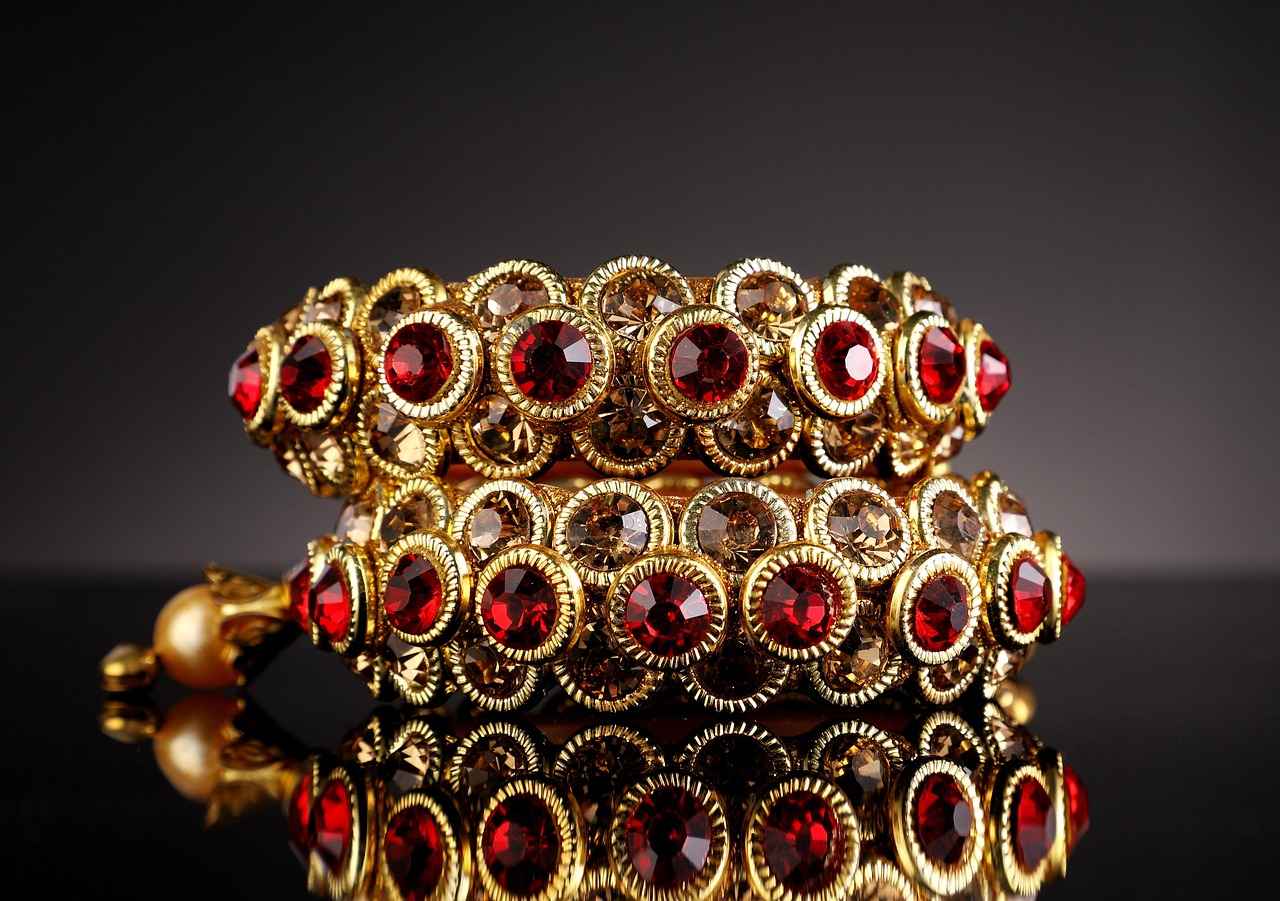
Why Choose Lab-Grown Diamonds for Engagement Rings?
When it comes to selecting the perfect engagement ring, couples today are increasingly considering lab-grown diamonds as a viable option. This surge in popularity can be attributed to several compelling factors that align with modern values and preferences.
Choosing lab-grown diamonds for engagement rings offers numerous advantages that resonate with today’s socially conscious couples. Here are some key reasons why these diamonds are becoming the go-to choice:
- Ethical Sourcing: One of the most significant benefits of lab-grown diamonds is their ethical sourcing. Unlike mined diamonds, which can be associated with conflict and exploitation, lab-grown diamonds are created in controlled environments, ensuring that no unethical practices are involved in their production. This transparency appeals to couples who prioritize social responsibility in their purchasing decisions.
- Cost-Effectiveness: Lab-grown diamonds are typically 30-40% less expensive than their mined counterparts. This cost reduction allows couples to allocate their budget towards customizing their engagement ring or even investing in additional features. The financial flexibility provided by lab-grown diamonds makes them an attractive option for many.
- Environmental Sustainability: The environmental impact of traditional diamond mining is substantial, often resulting in habitat destruction and significant carbon emissions. In contrast, lab-grown diamonds are produced with a much lower carbon footprint, making them a more sustainable choice for eco-conscious consumers. By choosing lab-grown, couples can enjoy their beautiful rings while also contributing to a healthier planet.
Lab-grown diamonds and mined diamonds share the same physical and chemical properties, which means they are virtually indistinguishable to the naked eye. Both types of diamonds can be graded by gemological standards, ensuring that consumers receive high-quality stones regardless of their source. This similarity allows couples to choose based on personal values rather than quality concerns.
Custom engagement rings are an excellent way to showcase lab-grown diamonds. Couples can tailor their ring designs to reflect their unique love stories, from selecting the diamond shape to choosing the band style. The possibilities are endless, making custom rings an increasingly popular option.
- Personalization: Custom engagement rings allow couples to express their individuality. This personalization can range from the choice of metal to intricate designs that hold special meaning.
- Variety of Styles: Whether you prefer a vintage-inspired design or a modern minimalist look, lab-grown diamonds can be beautifully integrated into any style. Exploring popular custom ring styles can help couples find the perfect match for their vision.
The rise of lab-grown diamonds indicates a shift in consumer preferences towards more ethical and sustainable options. As awareness grows, it is likely that more couples will opt for these diamonds, reshaping the engagement jewelry market. Industry experts suggest that the demand for lab-grown diamonds will continue to increase, driven by their affordability, ethical sourcing, and environmental benefits.
In conclusion, choosing lab-grown diamonds for engagement rings represents a modern and responsible choice for couples. By prioritizing ethical sourcing, cost-effectiveness, and environmental sustainability, lab-grown diamonds align perfectly with the values of today’s consumers. As the engagement jewelry market evolves, lab-grown diamonds are poised to become a staple, allowing couples to celebrate their love in a way that reflects their commitment to both each other and the planet.
Ethical Considerations
In today’s world, consumers are increasingly aware of the implications of their purchasing decisions, especially when it comes to luxury items like diamonds. One of the most significant advancements in the jewelry industry is the rise of lab-grown diamonds. These diamonds not only offer stunning beauty but also come with the promise of ethical sourcing. This section delves into the ethical considerations surrounding lab-grown diamonds, highlighting their role in promoting responsible consumerism.
Lab-grown diamonds are created in controlled environments, eliminating the ethical dilemmas often associated with mined diamonds. Here are some of the key benefits:
- Conflict-Free Assurance: Lab-grown diamonds are free from the conflict diamond trade, which has been linked to human rights abuses and funding for armed conflicts. By choosing lab-grown options, consumers can be confident that their purchase does not contribute to these issues.
- Transparency in Sourcing: The production process of lab-grown diamonds is transparent, allowing consumers to trace the origin of their gems. This transparency appeals to those who prioritize ethical sourcing in their buying decisions.
- Support for Ethical Practices: Purchasing lab-grown diamonds supports companies that adhere to ethical practices, fostering a market that values social responsibility and sustainability.
Unlike traditional diamond mining, which often disrupts local communities and environments, lab-grown diamonds have a minimal impact. Here are some considerations:
- Minimal Environmental Disruption: The production of lab-grown diamonds takes place in laboratories, significantly reducing the environmental damage associated with mining, such as habitat destruction and pollution.
- Empowerment Through Innovation: The technology behind lab-grown diamonds creates job opportunities in science and engineering fields, empowering communities through innovation rather than exploitation.
Another ethical consideration is the affordability of lab-grown diamonds. Typically, they are priced 20-40% lower than mined diamonds, enabling more consumers to access high-quality options.
- Budget-Friendly Choices: Couples can invest in larger or higher-quality lab-grown diamonds without breaking the bank, making it easier to choose a ring that reflects their unique love story.
- Encouraging Ethical Choices: The lower price point encourages more consumers to opt for ethically sourced diamonds, promoting a shift in the market towards responsible purchasing.
Industry experts predict that the demand for lab-grown diamonds will continue to rise as consumers become more conscious of their purchasing habits. The focus on ethical sourcing is expected to shape future trends in the jewelry market.
- Changing Consumer Preferences: As awareness of ethical issues grows, more consumers are likely to prioritize lab-grown options, leading to a significant shift in market dynamics.
- Innovation and Sustainability: Experts believe that advancements in technology will further enhance the production of lab-grown diamonds, making them even more sustainable and appealing to environmentally conscious buyers.
In conclusion, lab-grown diamonds represent a significant step forward in the jewelry industry, addressing ethical concerns while providing consumers with beautiful and affordable options. By choosing lab-grown diamonds, consumers can enjoy the brilliance of these gems while supporting responsible practices that benefit both society and the environment.
Cost-Effectiveness of Lab-Grown Diamonds
When it comes to choosing the perfect engagement ring, couples often find themselves weighing their options between lab-grown diamonds and traditional mined diamonds. One of the most compelling reasons to consider lab-grown diamonds is their cost-effectiveness. In this section, we will explore how these modern gems can provide significant savings, enabling couples to invest in more personalized and meaningful designs for their engagement rings.
Lab-grown diamonds can be significantly less expensive than their mined counterparts due to several factors:
- Controlled Production: Lab-grown diamonds are created in controlled environments, eliminating the costs associated with mining, such as labor, land disruption, and transportation.
- Faster Production Time: The process of creating lab-grown diamonds can be completed in a matter of weeks, whereas mined diamonds take millions of years to form. This rapid production leads to lower prices.
- Market Competition: As the technology for producing lab-grown diamonds improves, more companies enter the market, driving prices down and increasing consumer choice.
The price difference between lab-grown diamonds and mined diamonds can be substantial. On average, couples can expect to pay 20-40% less for a lab-grown diamond of the same size and quality compared to a mined diamond. This significant price reduction allows couples to stretch their budgets further, making it possible to:
- Invest in Custom Designs: With the money saved, couples can opt for custom engagement rings that reflect their unique love story, including personalized engravings or intricate settings.
- Choose Larger Stones: Couples may decide to upgrade to a larger lab-grown diamond without breaking the bank, offering a more impressive centerpiece for their engagement ring.
- Add Unique Features: The savings can also be used to add special features like colored diamonds or alternative gemstones, enhancing the overall beauty and individuality of the ring.
Investing in a lab-grown diamond is not only a financially sound decision but also an ethical one. Lab-grown diamonds offer a clear advantage in terms of ethical sourcing, as they are free from the controversies often associated with mined diamonds, such as conflict and environmental degradation. This aspect resonates with many modern couples who prioritize responsibility in their purchasing decisions.
As awareness of lab-grown diamonds continues to grow, consumer preferences are shifting. Couples are increasingly recognizing the value and affordability of lab-grown diamonds. This trend is evident in the rising number of retailers offering lab-grown options and the increasing demand for custom engagement rings that feature these stunning gems.
In summary, the cost-effectiveness of lab-grown diamonds allows couples to not only save money but also invest in more personalized and meaningful engagement rings. By choosing lab-grown diamonds, couples can enjoy the beauty and brilliance of these gems while making a responsible choice that aligns with their values.
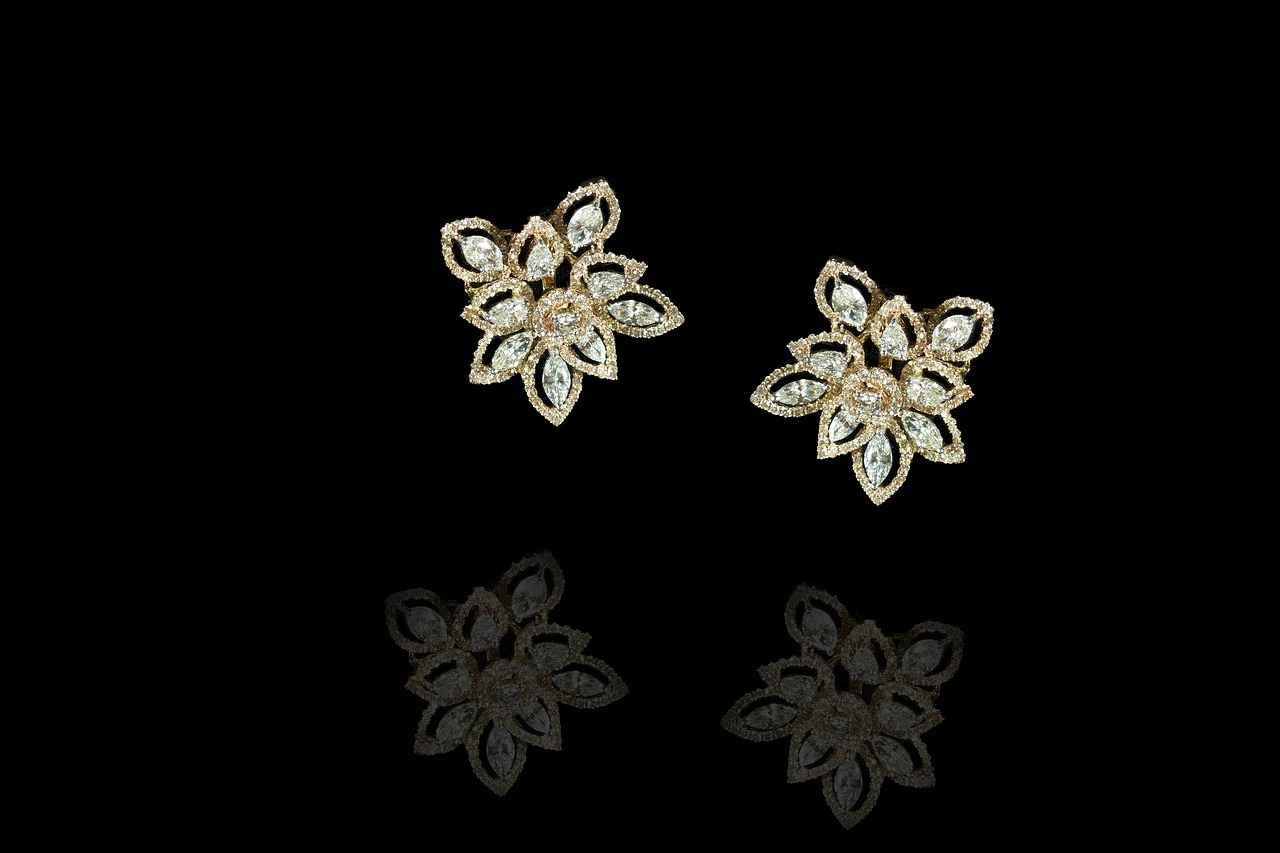
Custom Rings: The Perfect Complement to Lab-Grown Diamonds
When it comes to expressing love, nothing speaks louder than a custom ring adorned with a stunning lab-grown diamond. These unique pieces of jewelry allow couples to weave their personal stories into the very fabric of their engagement rings, creating a lasting symbol of their commitment. The combination of personalized designs and ethically sourced stones is revolutionizing the way couples approach engagement jewelry.
Custom rings have gained immense popularity for several reasons:
- Personalization: Couples can choose every detail, from the diamond shape to the band style, ensuring their ring is a true reflection of their relationship.
- Unique Designs: Unlike traditional rings, custom options allow for creative expressions that can incorporate personal elements, such as birthstones or engravings.
- Quality Control: By designing their own rings, couples can ensure high-quality materials and craftsmanship, leading to a more durable piece of jewelry.
Lab-grown diamonds serve as the perfect centerpiece for custom rings, offering a blend of beauty and ethical considerations. Here’s why:
- Identical Properties: Lab-grown diamonds possess the same physical and chemical properties as mined diamonds, making them just as brilliant and durable.
- Cost-Effectiveness: Generally, lab-grown diamonds are more affordable than their mined counterparts, allowing couples to allocate more of their budget towards unique designs or additional features.
- Ethical Sourcing: With lab-grown diamonds, couples can rest assured that their purchase is free from the ethical concerns associated with traditional diamond mining.
When designing a custom ring, couples can explore a variety of styles that cater to their tastes. Here are some popular options:
- Vintage-Inspired: These rings often feature intricate details and filigree work, reminiscent of bygone eras.
- Modern Minimalist: Sleek lines and simple settings characterize this style, appealing to those who prefer a contemporary look.
- Nature-Inspired: Designs that incorporate floral motifs or organic shapes can bring a touch of nature into the ring.
Couples can choose from various customization options to make their rings truly unique:
- Engravings: Personal messages or significant dates can be engraved on the inside of the band, adding a sentimental touch.
- Setting Styles: Options include solitaire, halo, or three-stone settings, each offering a different aesthetic.
- Metal Choices: From white gold to rose gold or platinum, the choice of metal can dramatically change the ring’s appearance.
Beyond their beauty and ethical considerations, lab-grown diamonds also have a significantly lower environmental impact compared to mined diamonds. Their production requires less land disruption and has a reduced carbon footprint, making them a more sustainable choice for eco-conscious couples.
Industry experts predict that the trend towards custom rings and lab-grown diamonds will continue to grow. As more consumers become aware of the ethical and environmental implications of their jewelry choices, the demand for these innovative options is expected to rise. Jewelers are adapting by offering more customizable solutions, ensuring that couples can find the perfect expression of their love.
In conclusion, custom rings paired with lab-grown diamonds represent a modern approach to engagement jewelry that prioritizes personal expression, ethical sourcing, and sustainability. This combination not only resonates with today’s couples but also sets a new standard for future generations.
Benefits of Custom Engagement Rings
Engagement rings symbolize love and commitment, and for many couples, choosing the right ring is a pivotal part of the engagement journey. One of the most exciting trends in the jewelry market today is the rise of custom engagement rings. These rings not only represent a couple’s unique bond but also allow for personal expression in design. Here, we explore the numerous and why they are becoming increasingly popular.
Custom engagement rings offer couples the chance to create a piece that is truly one-of-a-kind. The freedom to design a ring that reflects personal style and shared experiences is a significant advantage. Here are some key benefits:
- Personalization: With custom rings, couples can select every detail, from the diamond shape to the band style. This level of personalization ensures that the ring is a true reflection of their love story.
- Quality Control: When opting for a custom design, couples can choose high-quality materials that meet their standards. This means selecting ethically sourced diamonds, whether lab-grown or mined, and durable metals that will stand the test of time.
- Budget Flexibility: Custom engagement rings can be tailored to fit any budget. Couples can prioritize certain elements, such as the size of the diamond or the intricacy of the band, allowing for a personalized yet affordable option.
- Unique Designs: Unlike mass-produced rings, custom designs are unique. Couples can incorporate meaningful symbols, engravings, or even family heirlooms into their rings, making them even more special.
- Enhanced Emotional Value: A custom ring carries a story and sentiment that a standard ring simply cannot match. The process of collaborating with a jeweler to create a unique design can deepen the emotional connection between partners.
The journey of creating a custom engagement ring can be an enjoyable experience. Here are some steps to guide couples through the design process:
- Research and Inspiration: Start by gathering inspiration from various sources, such as social media, jewelry websites, and magazines. Create a mood board to visualize your ideas.
- Set a Budget: Determine how much you are willing to spend. This will help guide your choices in materials and design complexity.
- Choose a Jeweler: Find a reputable jeweler who specializes in custom designs. Schedule consultations to discuss your vision and ask for their insights.
- Select Your Materials: Decide on the type of diamond, whether lab-grown or natural, and the metal for the band. Consider how these choices will complement each other.
- Finalize the Design: Work closely with your jeweler to finalize the design. This may involve sketches, 3D models, or even prototypes to ensure the ring is perfect.
The possibilities for custom engagement ring styles are virtually endless. Here are some popular styles that couples often consider:
- Classic Solitaire: A timeless choice featuring a single diamond, perfect for those who appreciate simplicity.
- Halo Setting: A center stone surrounded by smaller diamonds, adding extra sparkle and a vintage feel.
- Three-Stone Rings: Representing the past, present, and future, these rings feature three diamonds and can be customized in various ways.
- Vintage-Inspired: Designs that incorporate intricate details and filigree, appealing to those who love antique aesthetics.
- Modern Minimalist: Clean lines and understated elegance characterize this style, perfect for couples who favor a contemporary look.
Ultimately, custom engagement rings provide a unique opportunity for couples to express their love and individuality. With endless possibilities and the ability to create a piece that resonates with personal significance, it’s no wonder that many are choosing this path for their engagement jewelry.
Popular Custom Ring Styles
When it comes to selecting an engagement ring, the options can be overwhelming. Couples today are increasingly opting for custom rings that reflect their unique styles and preferences. This trend has gained momentum, especially with the rise of lab-grown diamonds that serve as stunning centerpieces in these bespoke creations. Below, we explore some of the most popular custom ring styles that cater to a variety of tastes.
For those who appreciate the charm of bygone eras, vintage-inspired rings are a perfect choice. These rings often feature intricate details, such as filigree settings and milgrain edges, reminiscent of styles from the Edwardian or Art Deco periods. Couples can choose lab-grown diamonds that complement the antique aesthetic, ensuring a timeless appeal.
On the other end of the spectrum, modern minimalist rings have gained popularity among couples who prefer clean lines and understated elegance. These rings often feature a single lab-grown diamond set in a sleek band, emphasizing simplicity and sophistication. The minimalist approach allows the beauty of the diamond to shine without any distractions.
For those looking to make a statement, custom rings can be designed in whimsical shapes or with unconventional settings. From asymmetrical designs to rings that incorporate colored lab-grown diamonds, the possibilities are endless. Couples can express their individuality through unique styles that reflect their personalities.
Nature lovers may gravitate towards nature-inspired rings that incorporate organic elements. These designs often feature floral motifs, leaf patterns, or even textured bands that mimic the beauty of the natural world. Lab-grown diamonds can be paired with ethically sourced materials, enhancing the ring’s appeal to eco-conscious couples.
Stackable rings offer a fun and versatile option for couples who want to mix and match. Each ring can feature a different design or diamond shape, allowing for endless combinations. This style not only adds a personal touch but also enables couples to celebrate special occasions by adding new rings to their collection over time.
No discussion of custom engagement rings would be complete without mentioning the classic solitaire ring. This timeless style features a single lab-grown diamond, symbolizing the couple’s commitment. The simplicity of the design makes it a favorite choice for many, and it serves as a beautiful foundation for personalization through the choice of metal and diamond cut.
For those who desire extra sparkle, halo settings surround the central diamond with smaller stones, creating a stunning visual effect. This style enhances the appearance of the center stone while allowing couples to choose a lab-grown diamond that fits their desired size and brilliance. Halo rings are perfect for those who appreciate a bit of glamour in their engagement jewelry.
In conclusion, the world of custom engagement rings is vast and varied, offering something for every couple. From vintage-inspired settings to modern minimalist designs, the options are limitless. By exploring popular styles, couples can find the perfect match for their lab-grown diamond, creating a meaningful symbol of their love that truly reflects their unique journey together.
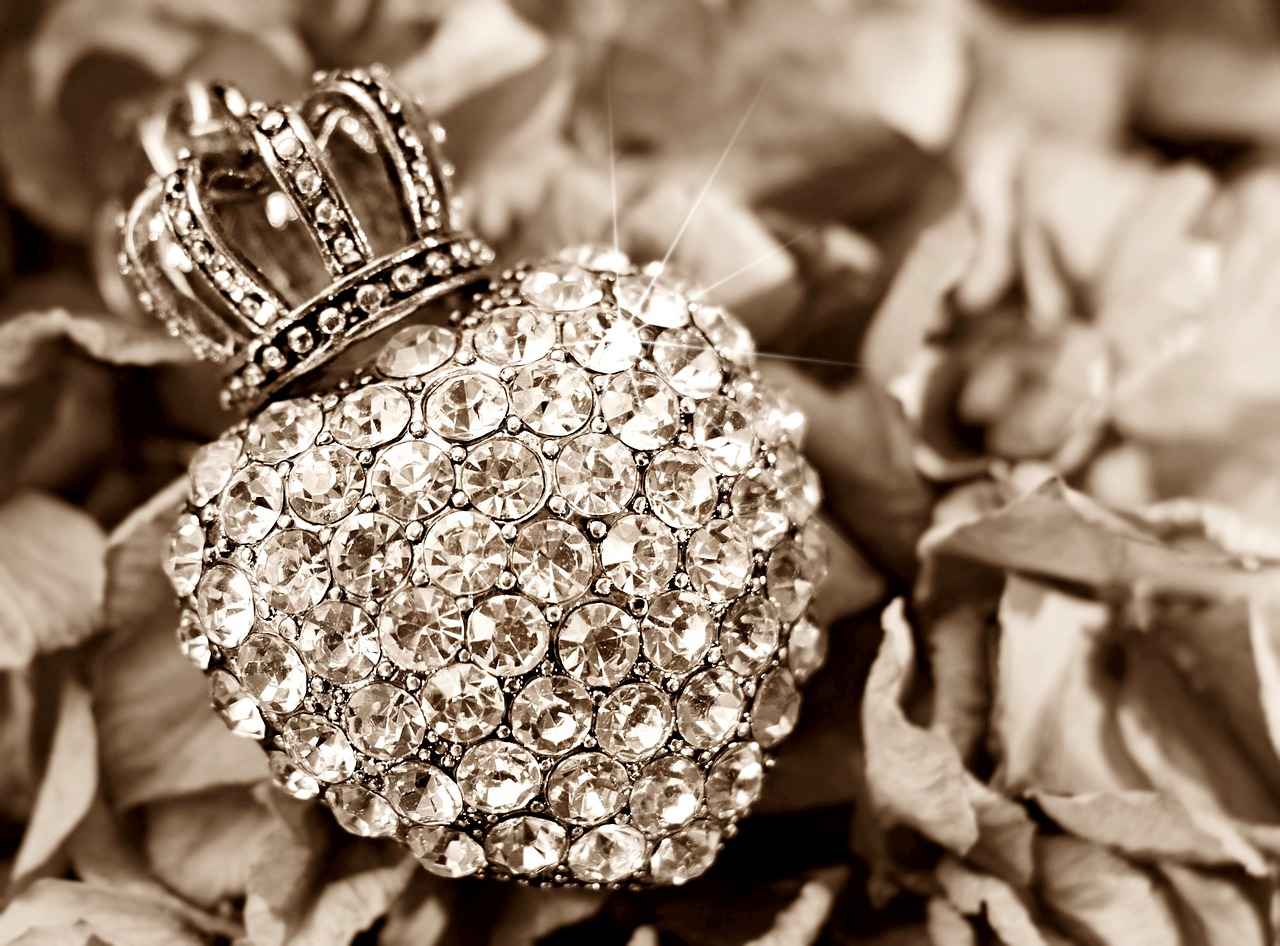
Environmental Impact of Lab-Grown Diamonds
As consumers become more environmentally conscious, the impact of their purchases on the planet is increasingly scrutinized. In the jewelry industry, lab-grown diamonds are emerging as a sustainable alternative to mined diamonds. This section delves into the environmental benefits of lab-grown diamonds, highlighting their lower carbon footprint and minimal land disruption.
Lab-grown diamonds are often regarded as a more sustainable choice compared to their mined counterparts. The production of these diamonds generally requires less land disruption and has a significantly lower carbon footprint. Here are some key factors that contribute to their eco-friendliness:
- Reduced Land Disturbance: Unlike traditional diamond mining, which necessitates extensive excavation and can lead to habitat destruction, lab-grown diamonds are created in controlled environments. This process minimizes the impact on natural ecosystems.
- Lower Energy Consumption: The energy required to produce lab-grown diamonds is considerably less than that needed for mining operations, which often involve heavy machinery and long transportation routes.
- Water Conservation: Mining diamonds can consume vast amounts of water, affecting local communities and wildlife. In contrast, lab-grown diamond production uses significantly less water.
The environmental impact of lab-grown diamonds is not only about reduced land use but also extends to their overall carbon emissions. A comparative analysis reveals the following:
| Criteria | Mined Diamonds | Lab-Grown Diamonds |
|---|---|---|
| Carbon Emissions | High | Low |
| Land Disruption | Significant | Minimal |
| Water Usage | High | Low |
As the table illustrates, lab-grown diamonds offer a more sustainable option when considering their environmental impact. This shift towards eco-friendly practices aligns with the values of a growing number of consumers who prioritize sustainability in their purchasing decisions.
The jewelry industry has long been criticized for its environmental practices. The extraction of natural resources often leads to severe ecological consequences. By choosing lab-grown diamonds, consumers can contribute to a more sustainable future. Here’s why sustainability in this industry matters:
- Preserving Biodiversity: Reducing the demand for mined diamonds helps protect wildlife habitats and preserves biodiversity.
- Supporting Ethical Practices: Lab-grown diamonds eliminate concerns about conflict diamonds, ensuring that purchases support ethical practices.
- Encouraging Innovation: The rise of lab-grown diamonds is driving innovation in sustainable practices within the industry, promoting a shift towards more responsible sourcing.
As awareness of the environmental impacts of diamond mining grows, more consumers are opting for lab-grown diamonds. This trend not only reflects a change in purchasing habits but also signifies a broader commitment to sustainability. Industry experts predict that the demand for lab-grown diamonds will continue to rise, shaping the future landscape of engagement jewelry.
In conclusion, lab-grown diamonds stand out as a responsible choice for environmentally conscious consumers. Their lower carbon footprint, reduced land disruption, and ethical sourcing make them an appealing option for those looking to make a positive impact through their purchases. With the jewelry industry gradually shifting towards sustainability, lab-grown diamonds are poised to play a significant role in reshaping consumer preferences and practices.
Land Use and Ecosystem Preservation
The impact of diamond production on our planet is a critical concern for many consumers today. Understanding the differences between mined and lab-grown diamonds can help individuals make informed choices that align with their values, particularly regarding environmental sustainability and ecosystem preservation.
Mined diamonds necessitate extensive land excavation, which can lead to significant habitat destruction. This process not only alters the landscape but also disrupts the delicate balance of local ecosystems. When mining companies clear vast areas of land, they often displace wildlife, destroy plant life, and degrade soil quality. The consequences can be long-lasting, affecting biodiversity and the health of the environment.
In contrast, lab-grown diamonds are produced in controlled environments, which helps to preserve natural ecosystems. The production of these diamonds requires minimal land use, as they can be created in facilities that do not disturb the surrounding environment. This method allows for the conservation of wildlife habitats and the protection of endangered species, making lab-grown diamonds a more sustainable option.
Lab-grown diamonds not only reduce the need for land excavation but also have a significantly lower carbon footprint. The energy used in their production is often derived from renewable sources, further minimizing environmental impact. In comparison, diamond mining involves heavy machinery and transportation, contributing to greenhouse gas emissions and climate change.
- Ethical Sourcing: Lab-grown diamonds eliminate concerns surrounding conflict diamonds, ensuring that purchases support ethical practices.
- Lower Environmental Impact: The production process for lab-grown diamonds is less harmful to the environment, preserving ecosystems and reducing carbon emissions.
- Resource Efficiency: Lab-grown diamonds require fewer natural resources, making them a more sustainable choice for consumers.
As awareness of the environmental impact of diamond mining grows, more consumers are gravitating towards lab-grown diamonds. This shift in consumer preference is reflected in market trends, indicating a rising demand for ethically sourced and environmentally friendly options. Jewelers are responding to this trend by offering a wider variety of lab-grown diamonds, catering to the values of eco-conscious buyers.
Furthermore, many consumers are now prioritizing sustainability in their purchasing decisions. They seek products that not only meet their aesthetic desires but also align with their ethical beliefs. Lab-grown diamonds represent a harmonious blend of beauty and responsibility, making them an attractive choice for modern consumers.
Industry experts predict that the demand for lab-grown diamonds will continue to rise, significantly influencing the engagement jewelry market. Innovations in technology and production methods are expected to enhance the quality and variety of lab-grown diamonds, making them even more appealing to consumers. As more people become informed about the negative impacts of mined diamonds, the trend towards lab-grown alternatives is likely to accelerate.
In conclusion, the choice between mined and lab-grown diamonds is not just a matter of aesthetics or price; it is also about making a responsible decision that considers environmental sustainability and ethical sourcing. By choosing lab-grown diamonds, consumers can contribute to the preservation of ecosystems while still enjoying the beauty and brilliance of these remarkable gems.
Carbon Footprint Comparison
As the conversation around sustainability and ethical consumption grows, more consumers are seeking alternatives that align with their values. One significant area of focus is the jewelry industry, particularly in the realm of engagement rings. Among the options available, lab-grown diamonds have emerged as a compelling choice, especially when considering their carbon footprint compared to traditional diamond mining.
The carbon emissions associated with any product can greatly influence consumer decisions, particularly for those who are environmentally conscious. When it comes to diamonds, the contrast between lab-grown and mined options is striking.
- Mining Operations: The extraction process involves heavy machinery, which not only consumes vast amounts of fossil fuels but also releases significant greenhouse gases.
- Transportation: Once mined, diamonds must be transported to processing facilities, often requiring long-distance travel that further adds to their carbon footprint.
- Land Disruption: Mining operations can lead to habitat destruction, which in turn affects local ecosystems and contributes to carbon emissions through loss of vegetation.
In contrast, lab-grown diamonds are produced in controlled environments using advanced technologies like High Pressure High Temperature (HPHT) or Chemical Vapor Deposition (CVD). These methods require significantly less energy and resources, resulting in a much lower carbon output.
| Factor | Mined Diamonds | Lab-Grown Diamonds |
|---|---|---|
| Carbon Emissions (per carat) | Approx. 200 kg CO2 | Approx. 15 kg CO2 |
| Energy Consumption | High | Low |
| Land Disruption | Significant | Minimal |
As awareness of environmental issues rises, many consumers are prioritizing sustainable choices in their purchasing decisions. Lab-grown diamonds offer a viable solution that meets these demands without sacrificing beauty or quality.
- Lower Environmental Impact: The significantly reduced carbon footprint of lab-grown diamonds aligns with the values of eco-conscious consumers, making them a responsible choice.
- Transparency: Lab-grown diamonds come with a level of transparency about their production methods that mined diamonds often lack, appealing to consumers who prioritize ethical sourcing.
- Affordability: With lower production costs, lab-grown diamonds are often more affordable than their mined counterparts, allowing consumers to invest in more personalized designs.
As the market for lab-grown diamonds continues to grow, it is likely that their adoption will further increase among consumers seeking sustainable options. With advancements in technology and a heightened awareness of environmental issues, lab-grown diamonds represent a significant shift in the jewelry industry.
In conclusion, the between lab-grown and mined diamonds illustrates a clear advantage for the former. As consumers become more educated about their choices, the trend towards lab-grown diamonds is expected to gain momentum, reshaping the future of engagement jewelry.

Are Lab-Grown Diamonds the Future of Engagement Jewelry?
The engagement jewelry market is undergoing a significant transformation, and at the forefront of this change are lab-grown diamonds. These gems are increasingly becoming a preferred choice for couples seeking engagement rings that align with their values. As the demand for ethical, affordable, and environmentally friendly options rises, lab-grown diamonds are poised to redefine the future of engagement jewelry.
The growing popularity of lab-grown diamonds suggests they are shaping the future of engagement jewelry. Their affordability, ethical sourcing, and environmental benefits resonate with modern consumers. Unlike traditional mined diamonds, lab-grown alternatives offer a guilt-free purchase, allowing couples to celebrate their love without compromising their values.
- Cost-Effective: Lab-grown diamonds can be up to 40% less expensive than their mined counterparts. This price difference allows couples to allocate their budget towards more personalized features in their rings.
- Ethical Sourcing: With lab-grown diamonds, there are no concerns regarding conflict diamonds. These gems are created in controlled environments, ensuring ethical practices throughout the production process.
- Environmental Impact: The production of lab-grown diamonds typically requires less energy and fewer resources than traditional mining, resulting in a significantly lower carbon footprint.
Understanding how lab-grown diamonds are created can deepen appreciation for their value. They are produced using two primary techniques: High Pressure High Temperature (HPHT) and Chemical Vapor Deposition (CVD). Both methods replicate the natural processes that form diamonds but do so in a sustainable and efficient manner.
One of the most compelling aspects of lab-grown diamonds is that they possess the same physical and chemical properties as mined diamonds. This means that, to the untrained eye, they are virtually indistinguishable. The only way to differentiate them is through advanced gemological testing, which further emphasizes their authenticity.
As consumer preferences evolve, so do the trends within the engagement jewelry market. Lab-grown diamonds are becoming increasingly mainstream, and many jewelers are beginning to offer these options as part of their standard inventory. This shift reflects a broader societal movement towards sustainability and ethical consumption.
Lab-grown diamonds pair perfectly with custom engagement rings, allowing couples to express their unique love stories. From selecting the shape and size of the diamond to choosing the band style and metal, the possibilities are endless. This level of personalization ensures that each ring is as unique as the couple it represents.
The rise of lab-grown diamonds is prompting a reevaluation of the traditional jewelry industry. As more consumers seek out these ethical alternatives, jewelers are adapting their business models to accommodate this demand. This shift not only benefits consumers but also encourages sustainable practices within the industry.
Industry experts predict that lab-grown diamonds will continue to gain traction in the years to come. As technology advances and consumer awareness increases, these diamonds are likely to dominate the engagement jewelry market. Their combination of beauty, ethical sourcing, and affordability makes them an attractive option for future generations.
In conclusion, the growing popularity of lab-grown diamonds signifies a pivotal shift in the engagement jewelry landscape. By prioritizing ethical sourcing, environmental sustainability, and affordability, these diamonds not only meet the needs of modern consumers but also pave the way for a more responsible future in jewelry. As couples increasingly embrace lab-grown diamonds, it is clear that they are not just a trend but a lasting change in how we celebrate love.
Market Trends and Consumer Preferences
As the jewelry industry evolves, market trends reveal a significant shift in consumer preferences, particularly towards lab-grown diamonds. This change is driven by a combination of factors including ethical considerations, cost-effectiveness, and a growing awareness of the environmental impact of traditional diamond mining. Understanding these trends is crucial for jewelers aiming to stay relevant in a competitive marketplace.
One of the primary reasons for the increasing popularity of lab-grown diamonds is the ethical sourcing. Consumers today are more informed and concerned about the origins of their products. Lab-grown diamonds are free from the stigma associated with conflict diamonds, which have been linked to human rights abuses. This transparency appeals to socially conscious buyers who prioritize ethical consumption.
Another significant factor influencing consumer preferences is the cost-effectiveness of lab-grown diamonds. Typically, these diamonds are priced 20-40% lower than their mined counterparts. This affordability allows couples to allocate their budgets towards customizing their engagement rings or investing in additional features, such as unique settings or intricate designs.
Lab-grown diamonds also offer a more sustainable option compared to mined diamonds. The production processes for lab-grown diamonds generally require less land disruption and result in a significantly lower carbon footprint. As awareness of climate change grows, eco-conscious consumers are increasingly opting for products that align with their values.
As awareness of lab-grown diamonds increases, market dynamics are shifting. Jewelers who adapt to these changes can better meet the demands of modern consumers. Many retailers are now offering a wider selection of lab-grown diamonds, recognizing the need to provide options that cater to evolving preferences.
Despite the growing popularity of lab-grown diamonds, there remains a need for consumer education. Many potential buyers may not fully understand the differences between lab-grown and mined diamonds. Jewelers have an opportunity to educate their clients about the benefits of lab-grown diamonds, emphasizing their identical physical and chemical properties to mined diamonds.
Industry experts predict that the demand for lab-grown diamonds will continue to rise, shaping the future of the engagement jewelry market. As more consumers become aware of the benefits and ethical implications, jewelers must remain agile and ready to adapt their offerings. By embracing these changes, they can position themselves as leaders in the evolving landscape of engagement jewelry.
The trends surrounding lab-grown diamonds indicate a significant transformation in consumer preferences. As awareness and education continue to grow, jewelers who understand and respond to these shifts will thrive in the changing market. The future of engagement jewelry lies in the hands of those who prioritize ethical practices, sustainability, and cost-effectiveness.
Expert Insights on the Future
As the jewelry industry evolves, lab-grown diamonds are emerging as a significant trend, reshaping the engagement jewelry market. Industry experts predict that these innovative gems will continue to gain traction, driven by changing consumer preferences and technological advancements. In this section, we delve into the insights provided by experts regarding the future of lab-grown diamonds and their influence on engagement jewelry.
Experts foresee a bright future for lab-grown diamonds, attributing their rise to several factors:
- Affordability: Lab-grown diamonds are generally more cost-effective than mined diamonds, making them an attractive option for couples looking to maximize their budget without compromising on quality.
- Sustainability: With increasing awareness about environmental issues, lab-grown diamonds present a sustainable alternative that appeals to eco-conscious consumers.
- Technological Advancements: Continuous improvements in diamond-growing technology are expected to enhance the quality and variety of lab-grown diamonds, making them even more desirable.
Changing consumer preferences are significantly influencing the engagement jewelry landscape. Experts highlight that:
- Ethical Sourcing: More consumers are prioritizing ethically sourced products, leading to a shift away from traditional mined diamonds. Lab-grown diamonds provide a conflict-free option that resonates with socially responsible buyers.
- Customization: The demand for personalized jewelry is on the rise. Lab-grown diamonds can be easily integrated into custom designs, allowing couples to create unique engagement rings that tell their love story.
- Awareness and Education: As consumers become more informed about the differences between mined and lab-grown diamonds, they are more likely to choose the latter. Educational campaigns by jewelers play a crucial role in this shift.
Industry insiders believe that the lab-grown diamond sector will witness several innovations in the coming years:
- New Production Techniques: Emerging technologies may lead to faster and more efficient methods of diamond production, reducing costs and increasing availability.
- Variety of Offerings: Expect to see a wider range of colors and styles as manufacturers experiment with different growing techniques, appealing to diverse consumer tastes.
- Enhanced Marketing Strategies: As competition grows, jewelers will likely adopt innovative marketing strategies to highlight the benefits of lab-grown diamonds, further boosting their popularity.
The impact of lab-grown diamonds on engagement jewelry trends is expected to be profound:
- Shift in Aesthetics: The aesthetic appeal of lab-grown diamonds, which can be produced in various colors and sizes, will inspire new design trends in engagement rings.
- Increased Collaboration: Jewelers may collaborate with designers to create bespoke collections featuring lab-grown diamonds, catering to the growing demand for individuality in engagement rings.
- Broader Acceptance: As more consumers embrace lab-grown diamonds, traditional jewelers may expand their offerings to include these gems, further integrating them into the mainstream market.
In conclusion, the future of engagement jewelry is being reshaped by lab-grown diamonds. With their ethical sourcing, cost-effectiveness, and sustainability, these gems are poised to influence consumer choices significantly. As industry experts continue to provide insights into this evolving landscape, the potential for further innovations remains vast, ensuring that lab-grown diamonds will play a crucial role in the engagement jewelry market for years to come.
Frequently Asked Questions
- What are the main differences between lab-grown diamonds and mined diamonds?
Lab-grown diamonds are created using advanced technology that replicates the natural diamond formation process, while mined diamonds are extracted from the earth. Both types of diamonds have the same physical and chemical properties, but lab-grown diamonds are often more affordable and ethically sourced.
- Are lab-grown diamonds considered real diamonds?
Absolutely! Lab-grown diamonds are real diamonds. They have the same molecular structure and properties as mined diamonds, making them indistinguishable to the naked eye. So, when you choose a lab-grown diamond, you’re still getting a genuine gem.
- How much can I save by choosing a lab-grown diamond?
Choosing a lab-grown diamond can save you anywhere from 20% to 40% compared to a mined diamond of similar quality. This means you can allocate your budget towards a custom ring design or other features that make your engagement ring truly unique!
- What are the environmental benefits of lab-grown diamonds?
Lab-grown diamonds generally have a lower carbon footprint and require less land disruption than mined diamonds. This production method helps preserve natural ecosystems and reduces habitat destruction, making them a more sustainable choice for eco-conscious consumers.
- Can I customize my lab-grown diamond engagement ring?
Definitely! Custom rings allow you to design a piece that reflects your personal style and love story. From selecting the diamond shape to choosing the band material, the possibilities are endless when creating your perfect engagement ring.
